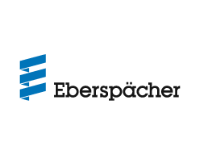Model Based Engineering – MBE
Model-basedness throughout the product development process.
Contact us nowWhat is Model Based Engineering?
Digital engineering is a multidisciplinary approach in engineering and technology sciences for the development and production of complex systems. In this context, digital technologies (e.g. CAD, CAE, CAM), processes and tools (e.g. MBD, MBSE) are closely and consistently linked and applied for the planning, design, development, production and deployment of complex systems, which may consist of a multitude of intelligent hardware and software components.
Model Based Engineering (MBE) is a method that focuses on the use of models to support the development of complex systems. In contrast to document-centred engineering, MBE emphasises models as the primary means of description and information exchange. It is a formalized method used to support system requirements, design, analysis, verification and validation activities in the design phase and throughout the development process.
MBE definition of the Model Based Engineering Subcommittee
“An approach to engineering that uses models as an integral part of the technical baseline that includes the requirements, analysis, design, implementation, and verification of a capability, system, and/or product throughout the acquisition life cycle.”
(Final Report of the Model Based Engineering (MBE) Subcommittee, NDIA Systems Engineering Division M&S Committee, February 2011)
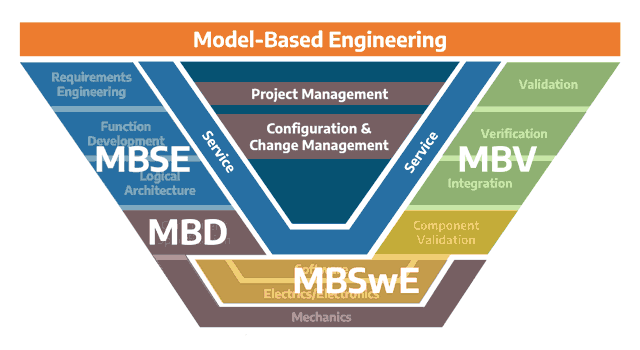
What added value do our services in the context MBE offer you?
Create the necessary basis for the Digital Master and the Digital Twin
Digital consistency reduces your time-to-market
Complete transparency and mastery of system complexity by replacing documents with models
No Digital Twin without Model Based Engineering
Model Based Engineering accompanies the product development process from the first concept to the finished product. Documents are consistently replaced by models. Through an integrated or federated information flow (digital thread) that connects all phases of the product life cycle and product development models using native or neutral and open data formats, the engineering models can ideally be further processed digitally without loss – efficiency and quality increase throughout the entire development process with reduced costs and time.
Model Based Engineering is the basic prerequisite for the successful digitalization of product development and the implementation of the Digital Twin. Technologies and methods that will be a significant competitive advantage in the market of the future.
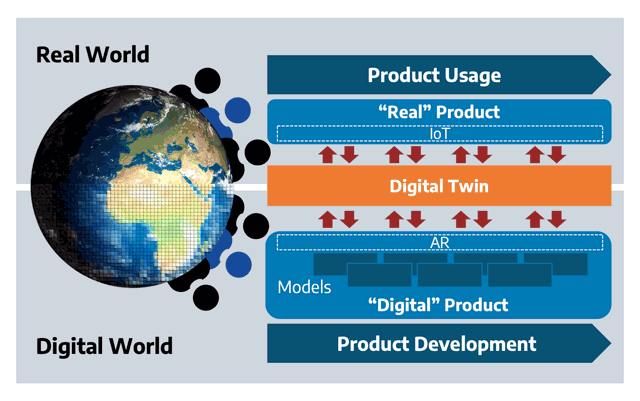
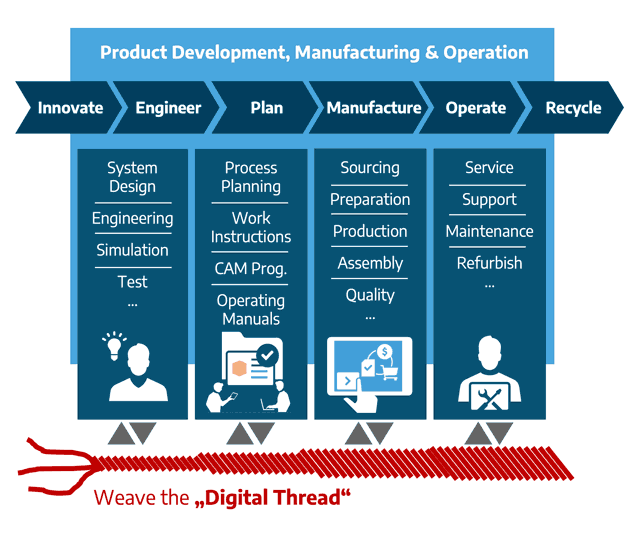
We weave your Digital Thread!
As defined by the ASME MBE Committee, the Digital Thread is an integrated flow of information that links all phases of the product life cycle using a recognised authorised data source.
This networking and the digital continuity it achieves brings real added value, such as the feedback of field data into production or maintenance.
You can also find an overview of our services in our company brochure
For more information download our brochure below.
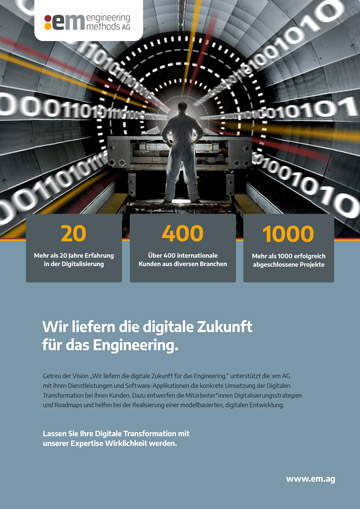
FAQ – frequently asked questions on the topic of Model Based Engineering
MBE is a broad concept and includes various methods such as Model-based Definition (MBD) or Model-based Systems Engineering (MBSE).
MBD (Model-based Definition) describes methods and technologies for the construction of processes without drawings on the basis of the so-called 3D master, i.e. 3D CAD models, which are supplemented by geometric and non-geometric information and so-called Product Manufacturing Information (PMI, semantic manufacturing information) as well as metadata. For this purpose, the so-called ISO-GPS – Geometric Product Specification is used as a method, which is a systematized and standardized compilation of features and attributes for the geometric characterization of products to be manufactured in commercial life and enables the specification of product geometry and its verification (e.g. size dimension, shape, tolerances, etc. are described completely and unambiguously in technical specifications).
Model-based Systems Engineering (MBSE) is a model-based systematics and methodology of Systems Engineering in which information about a system to be developed is no longer based exclusively on documents, but on models. These models are usually created on the basis of the SysML specification and describe the problem and solution space for a technical system on the basis of requirements, elements and structure of system architectures as well as the functional and logical behavior. In addition, based on this, static and dynamic analyses can be performed early in the development process.
MBSE enables a more precise and comprehensive modeling of the system under consideration than is possible with the prose texts in classic specification documents and functional specifications or draft concepts, which leads to a better understanding of the system by all stakeholders. In addition, with the help of system and interface specifications, the transition of consideration from the system to the subsystem or component level is systematically accomplished and dependencies become visible with the help of models.










